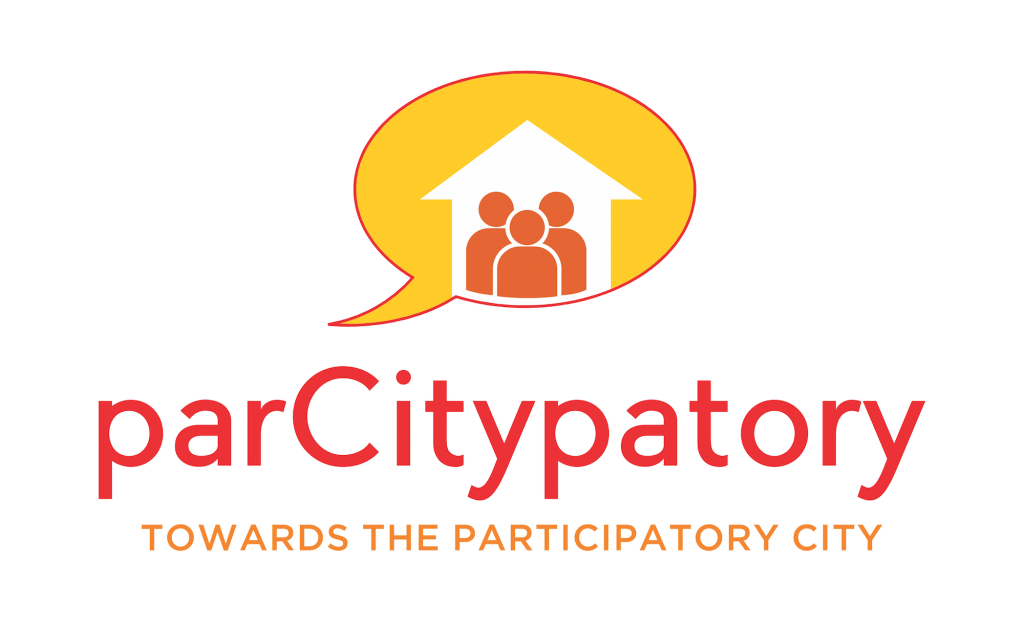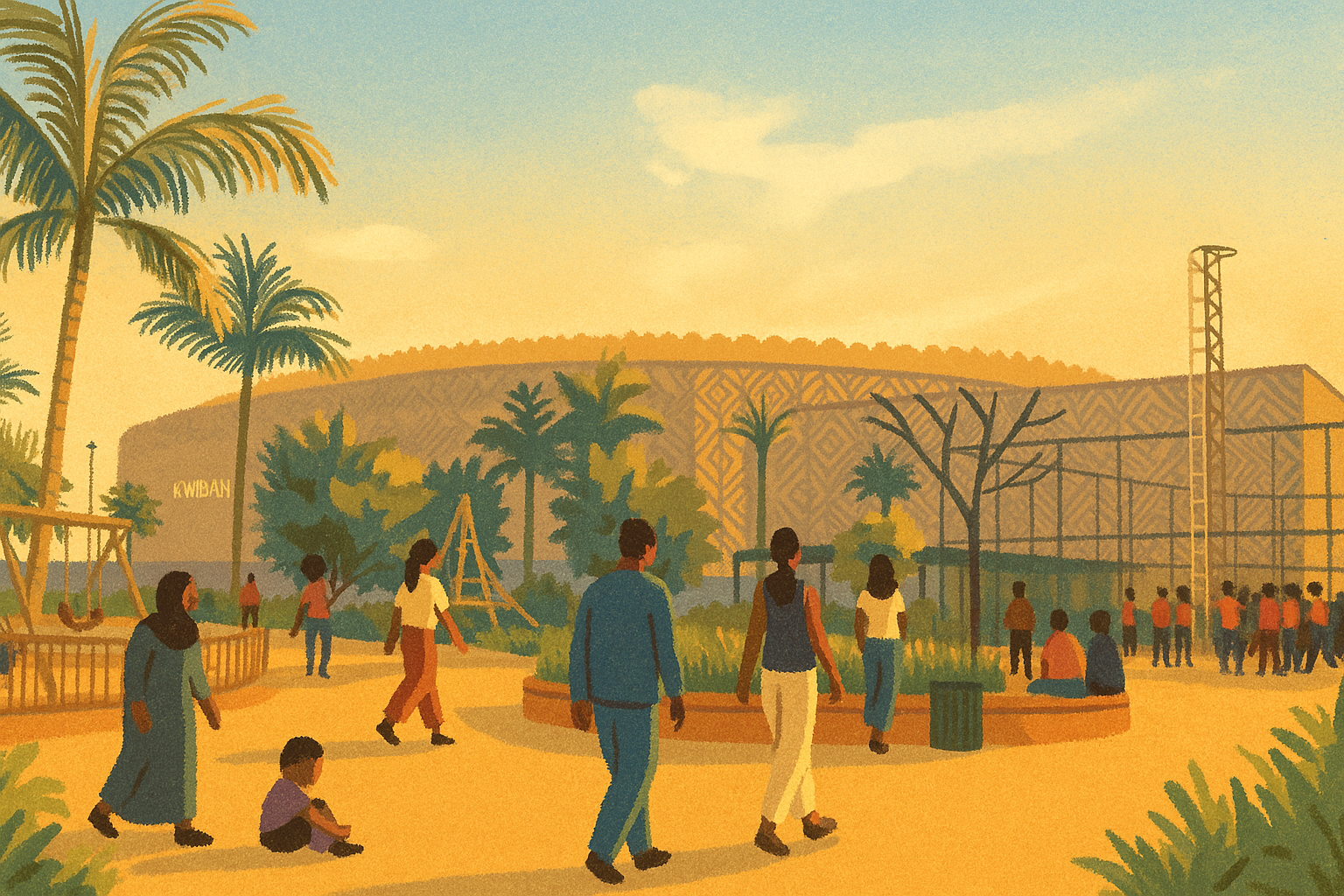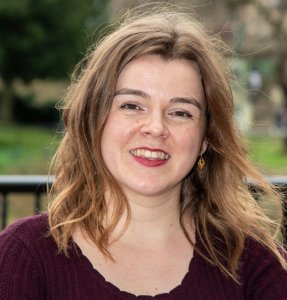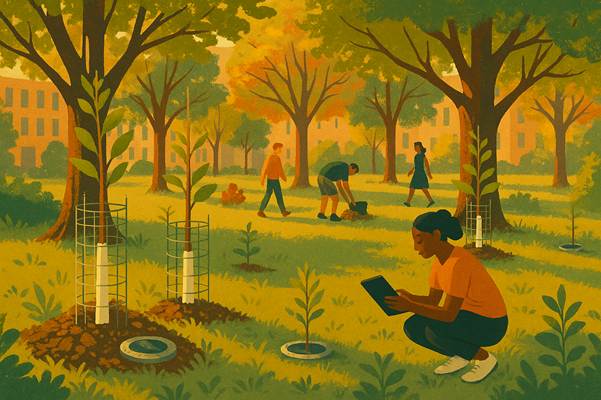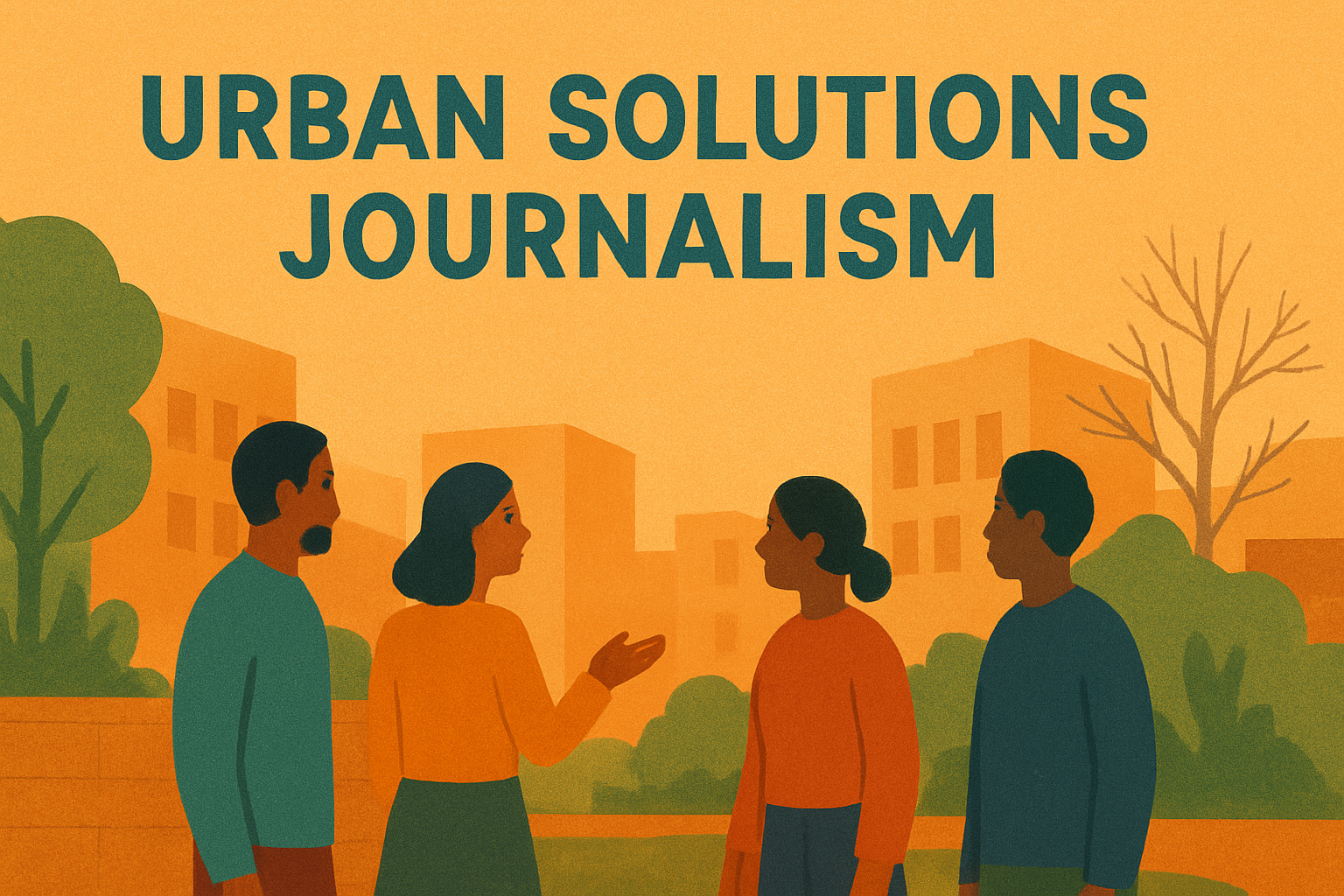In densely populated cities like Kigali, it’s increasingly difficult to find public green spaces like parks near business districts. Located in Remera, one of the busiest business areas in the city, a new multi-purpose complex is nestled between two narrow streets. On a small plot of land surrounded by blocks of buildings, Zaria Court echoes the need for open public space in the city. At the same time, it demonstrates how density can be used efficiently to facilitate social cohesion through entertainment in nature.
Increasing the city’s tree canopy
As the city of Kigali has committed itself to promote and execute environment sustainability standards, so has Zaria Court. The site has provided a space for nature to coexist with business and entertainment components within the multi-purpose complex. As you can see on the map below, there is very little tree canopy inside Zaria Court. The place is still new and the trees and vegetation will eventually grow. But if you take a close look at the surrounding area and streets, there are very few trees and the area is a dense business district populated by concrete infrastructure.
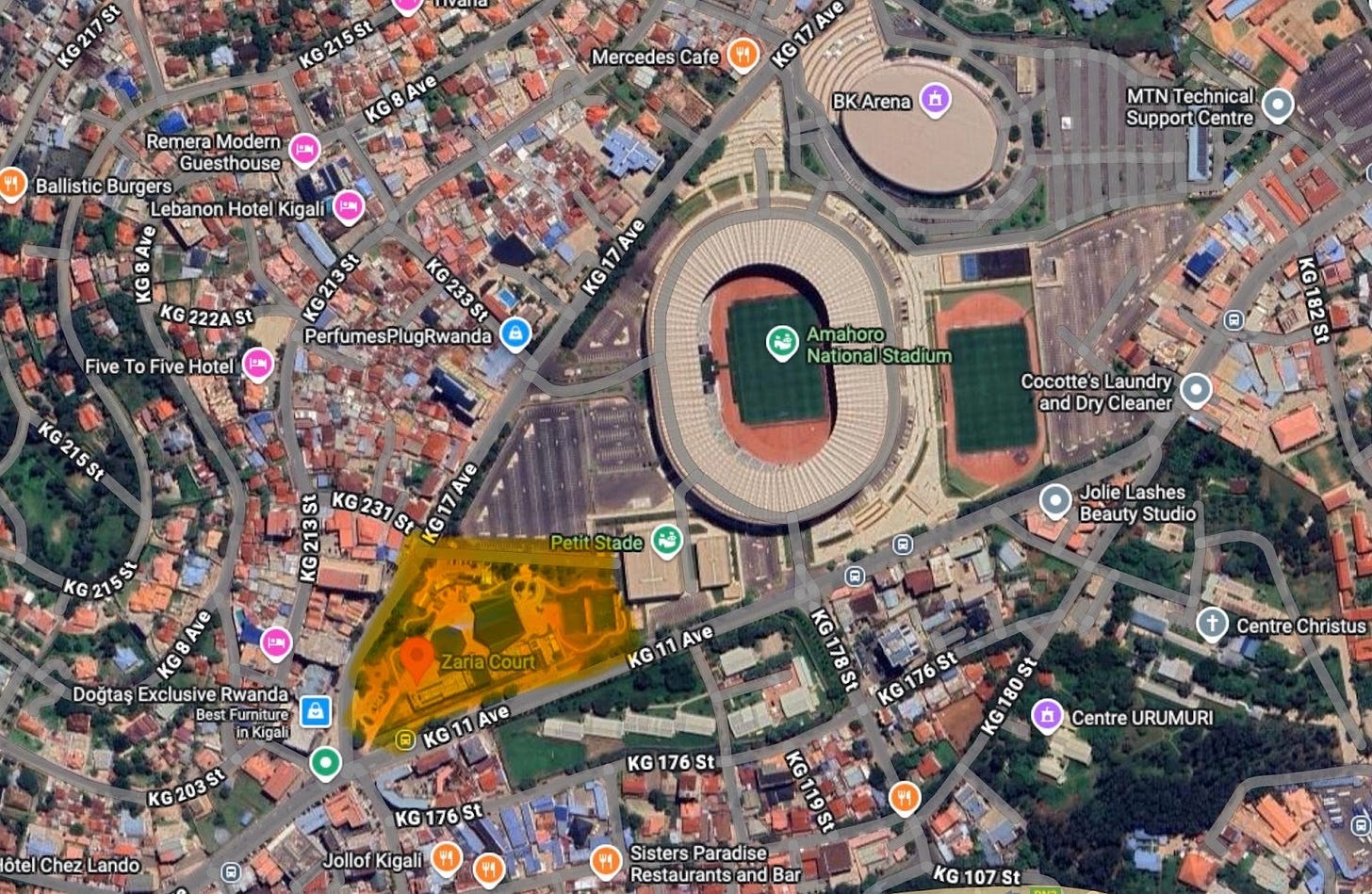
That being the case, shade and fresh air will make the new complex attractive for people in the Remera area and Kigali in general. The sun’s radiation is highly reflected by concrete surfaces from buildings and roads which increase temperatures. So the tree-shaded park benches in Zaria Court will come in handy for extremely hot days. More shade can be found at the kid’s playground, which is largely covered by trees, a bit of sand to play with, grass, and various plants.
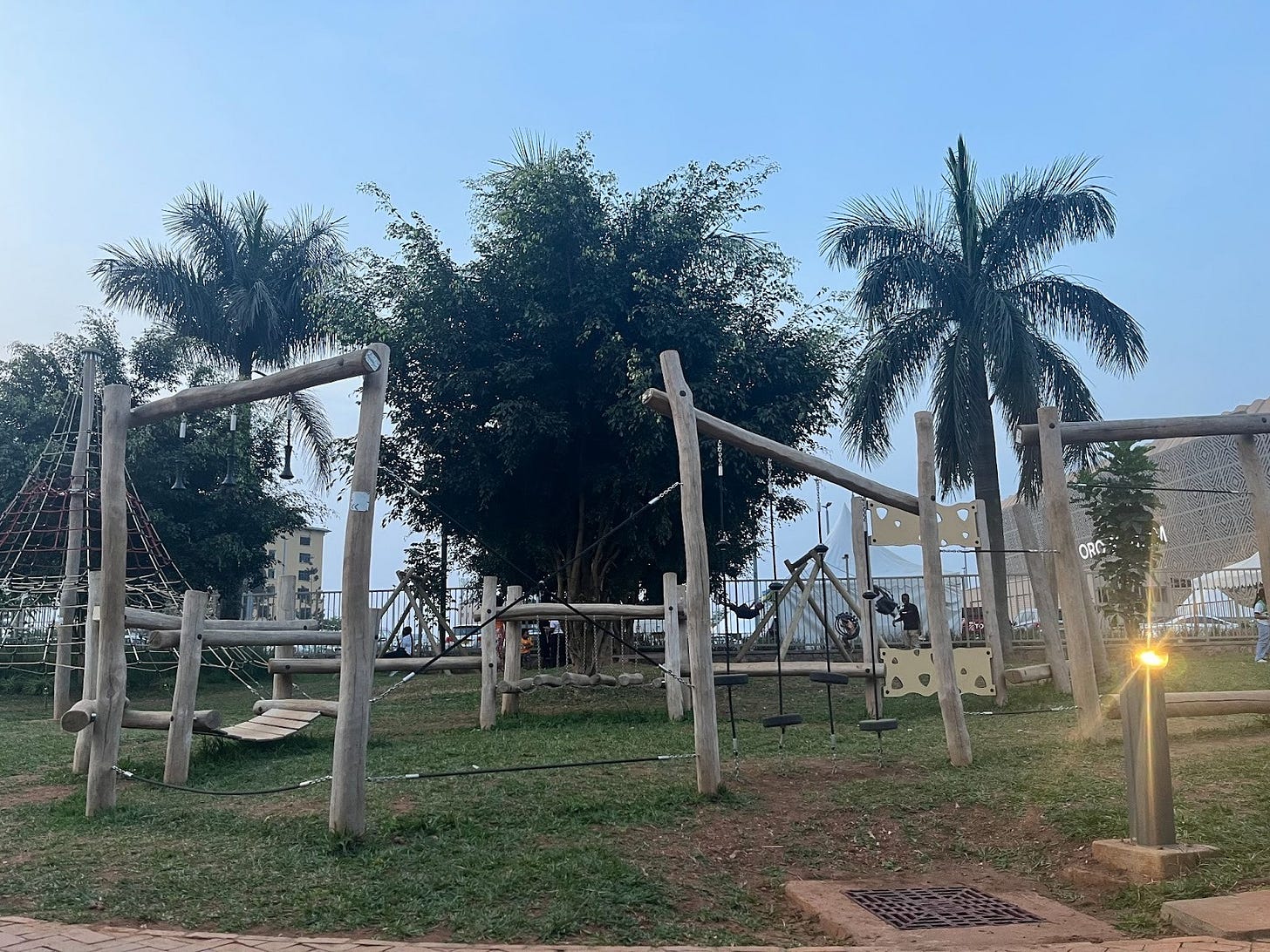
At the second entrance, there is a pond with small fish in it, surrounded by a few plants nearby. This blue space is linked to the entire natural ecosystem of the complex because birds can drink the water. As surrounding plants and trees grow, birds will also nest in them and enjoy their shade. Other living organisms like small insects will use them as their habitat. Another important use of the pond is to absorb rainwater and prevent flooding in cases of extreme rainfall. The trees and vegetation surrounding the pond will absorb rainwater, use it as food to grow new leaves and roots and release it with much less intensity than they absorbed it with – an element of the sponge city.
A truly accessible public space
On my visit to Zaria Court on a Sunday in September, a group of young children was practicing their karate on a large roof-covered event space that also serves as a basketball court. On the other side, groups of young children were playing football on the new synthetic fields, while toddlers enjoyed the sand and swing in the kids’ playground surrounded by tall trees and vegetation. This shows how the space successfully serves different purposes at the same time, attracting a wide variety of people from all age ranges.
Zaria Court provides public space while incorporating nature. This not only helps various natural ecosystems but also offers shade and fresh air in a busy part of the city surrounded by concrete blocks that reflect the sun’s heat and raise temperatures.
When designing and evaluating a new public space, it is important to listen to the target group and their needs in terms of the quality of the space, its accessibility, and its potential for socialising. Zaria Court is primarily for young people. I managed to talk to a group of girls who had taken centre stage at the open space to record videos for the latest TikTok trends.

“Kids are free and the space is open for everyone,” Marie told me. For young people like Dushimire Marie, that comes first in any public space as she said in her own words. A high school student, Youtuber and artist, Zaria Court offers just what she needs. While public spaces should by definition be free to access, multi-purpose elements like the ones at Zaria Court are too often turned into an amusement park that charges entry fees to everyone.
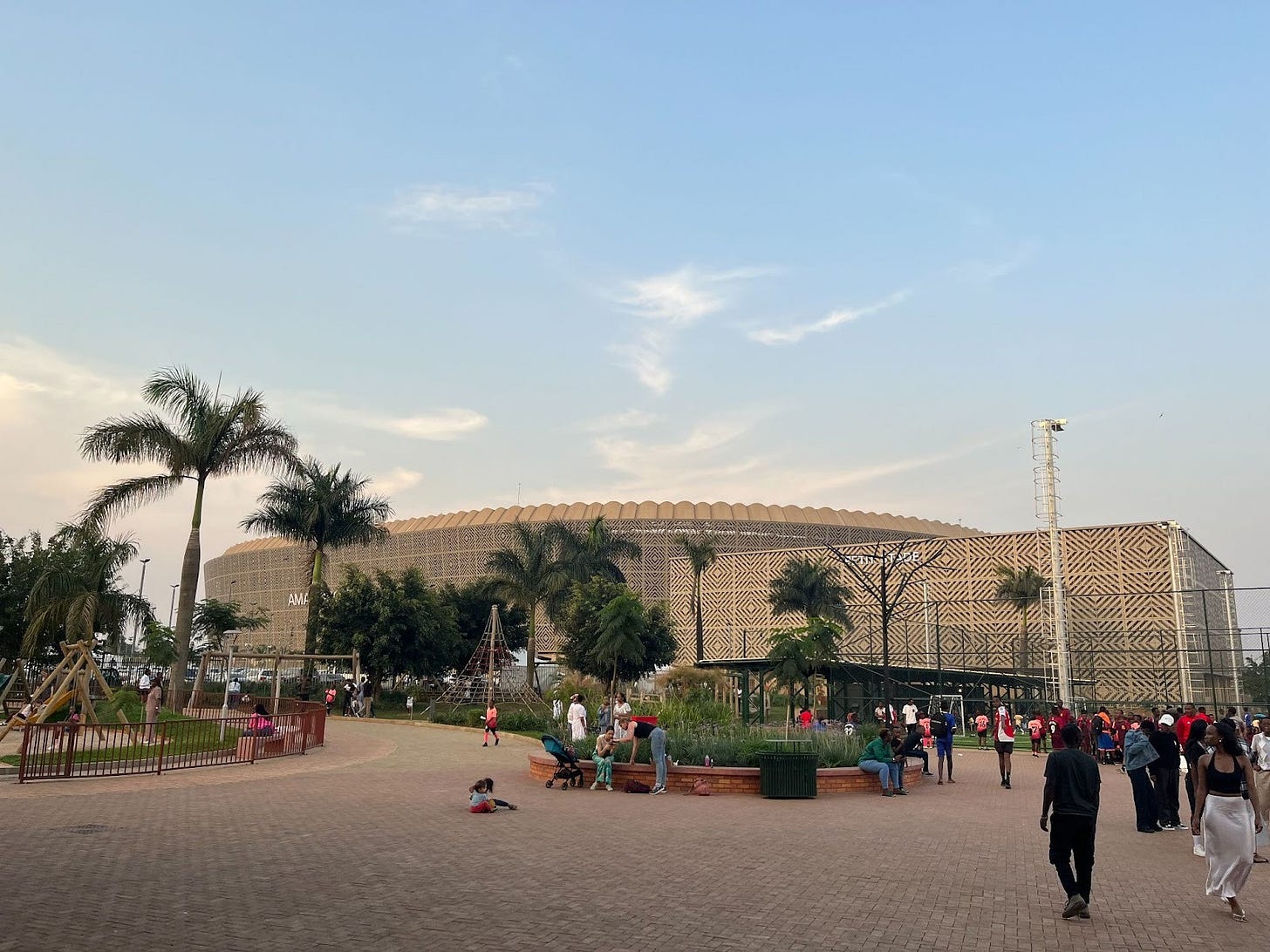
Expanding football pitches across the city
In the city of Kigali, seeing new football pitches is exciting. There’s a shortage of football pitches, especially ones with quality and not deprived of grass and filled with potholes due to the sun and poor maintenance. Although there are two five-a-side football pitches, Zaria Court’s new fields are synthetic, making them virtually immune from drying out under the sun. “We usually play in Nyamirambo [another part of town], but I think we’ll be coming here more often,” said a young football player to me when I asked if he regularly plays here. He was there to celebrate a win with his team and their treat was ice cream and a visit to Zaria Court.
With all the positives from community-building and entertainment, there remains one caveat. From my observations, accessibility is still a mixed bag. To reserve one of the five-a-side pitches for example, prices are higher during weekends. During weekdays, the price is 8,000 Rwandan Francs (RWF) per person, which is roughly five USD . During the weekends, the price goes up to 12,000 RWF (around eight USD) per person. This profit-maximisation strategy is unfair to those who can only play on weekends, making it less affordable.
Conclusion
Zaria Court provides public space while incorporating nature at the same time. This not only helps various natural ecosystems but also offers shade and fresh air in a busy part of the city surrounded by concrete blocks that reflect the sun’s heat and increase temperatures.
All in all, Zaria Court is an exciting environment, especially for young people. But it is still quite new and therefore attracts a lot of curiosity. It will be interesting to follow up in a few months or years to see how the space holds up with time. The key question will be whether it remains accessible. If that is the case, it can be an inspiring example for other cities like Nairobi or Kampala which are also very densely populated.
Thank you, Hirwa Hans! Here you can read more of his work
